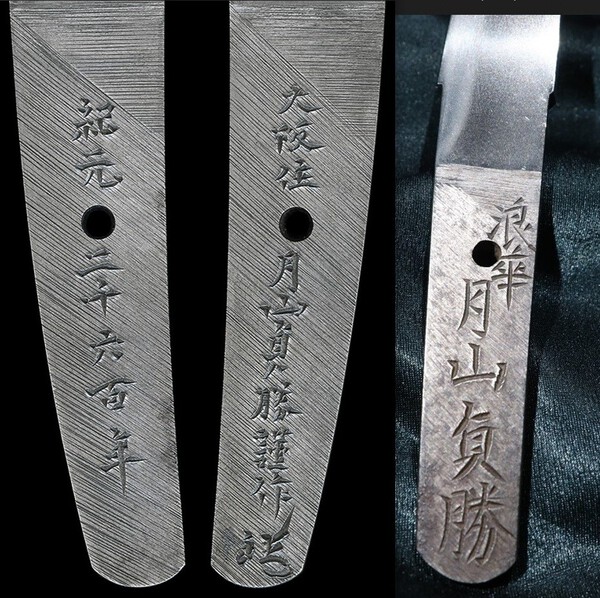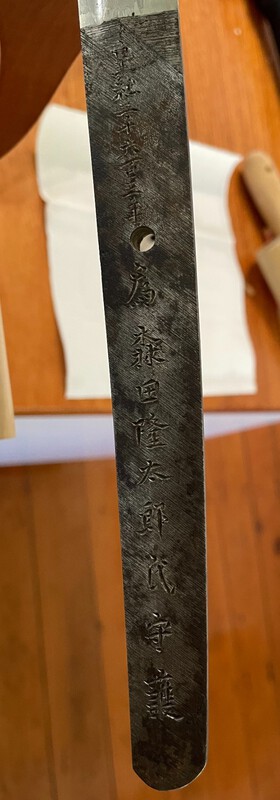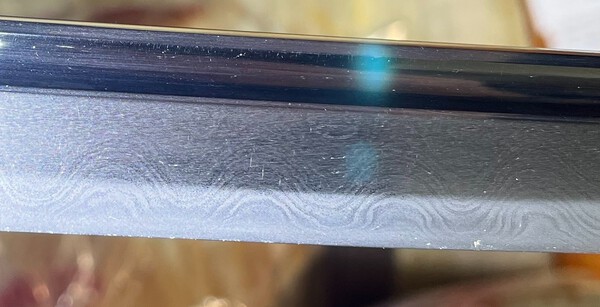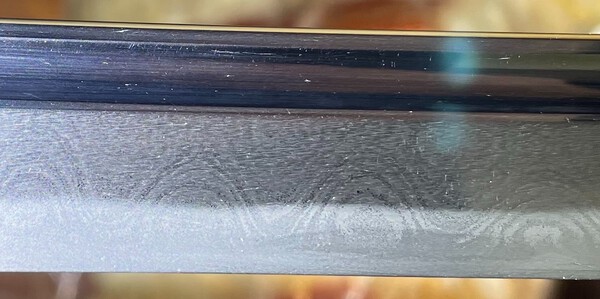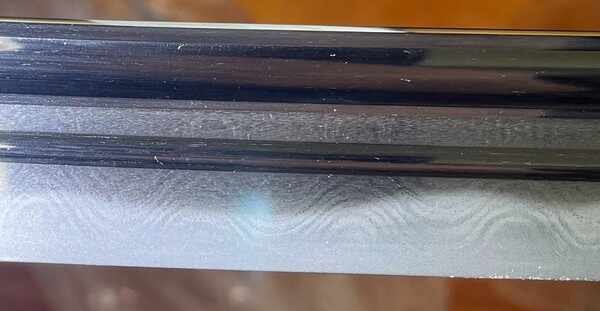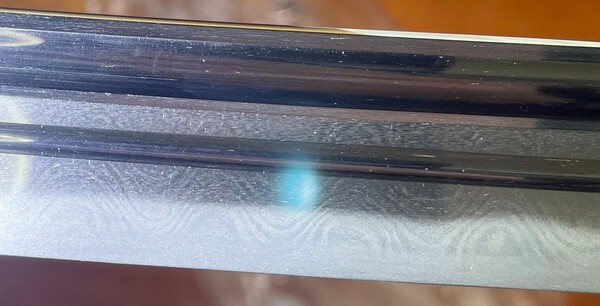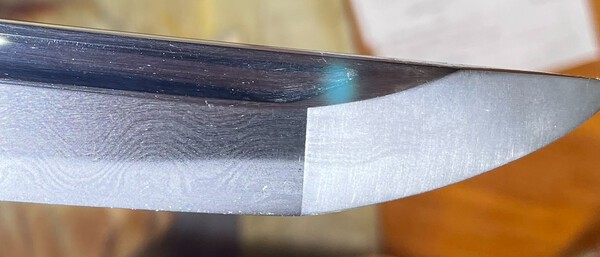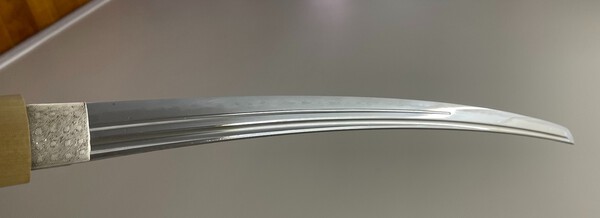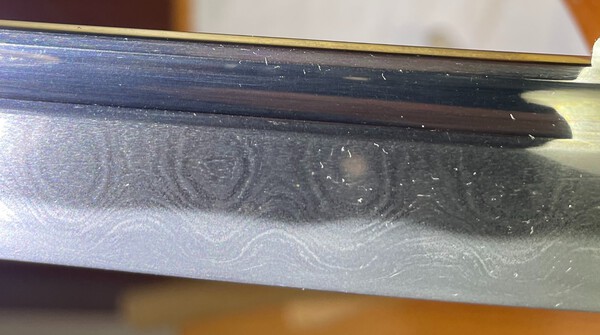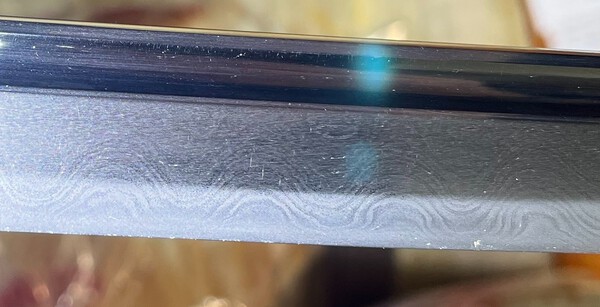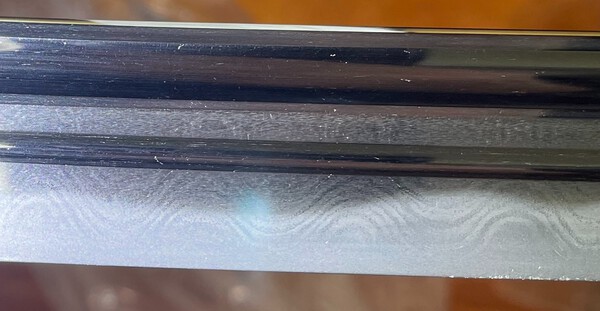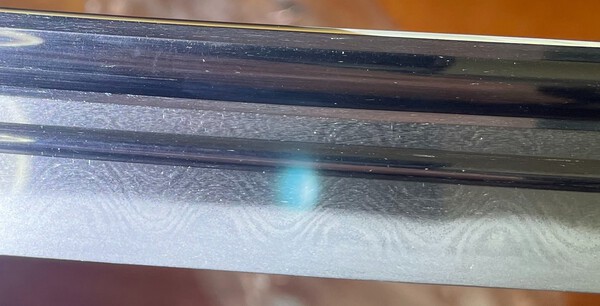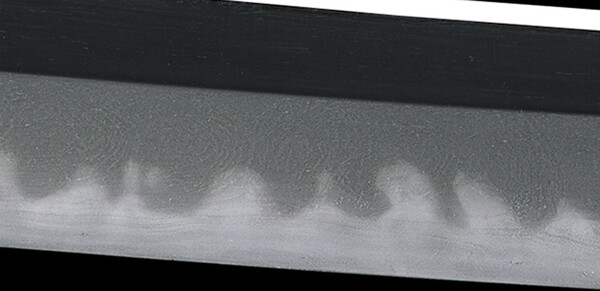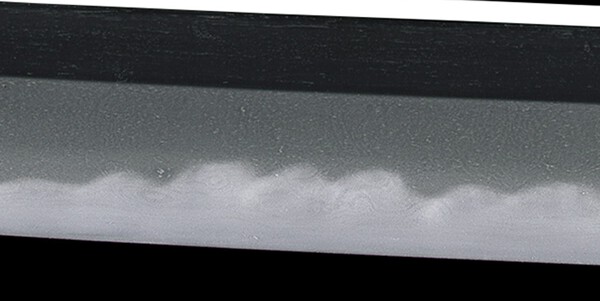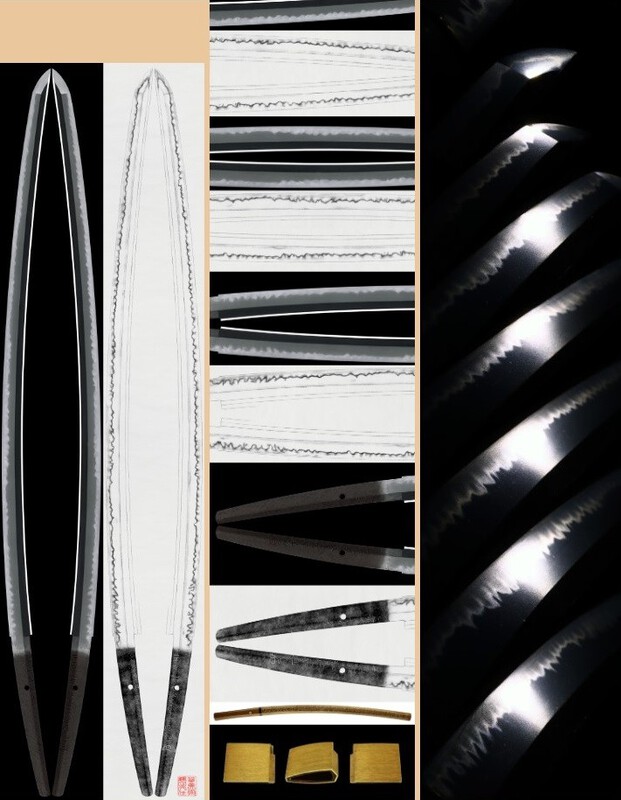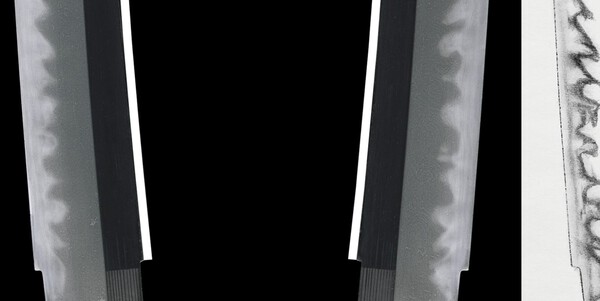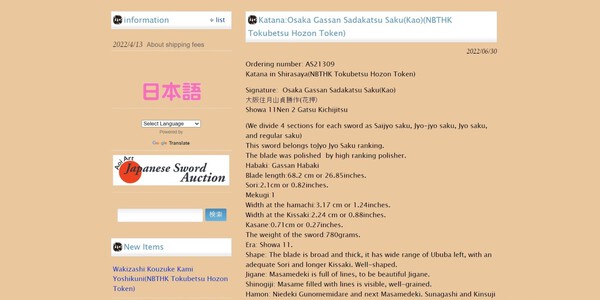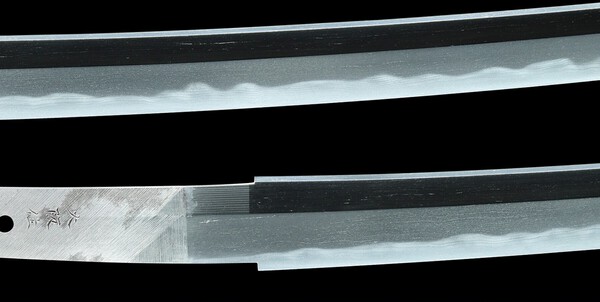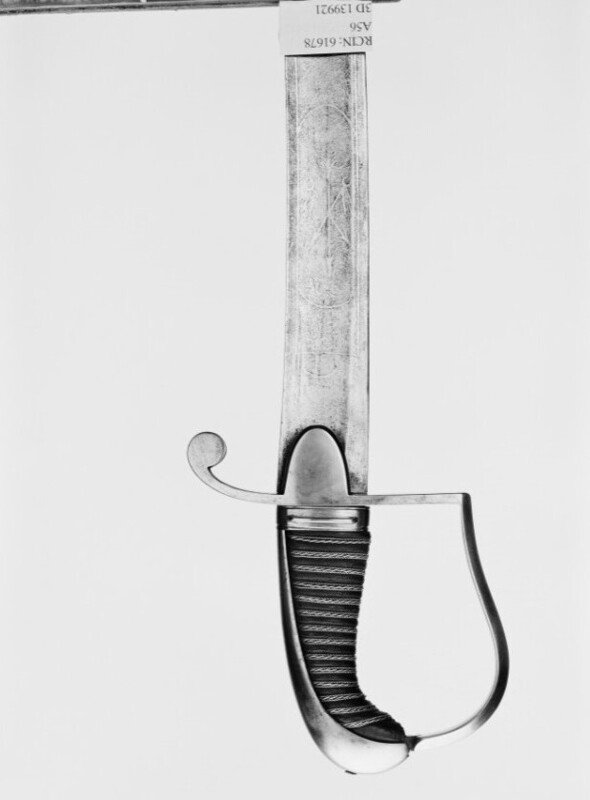-
Posts
741 -
Joined
-
Last visited
-
Days Won
14
Content Type
Profiles
Forums
Events
Store
Downloads
Gallery
Everything posted by Bryce
-
G'day David, I get what you are saying about the weak hamon, because it is broken up by the alternating layers of steel thru it, but it does have a certain "wow" factor. Cheers, Bryce
-
G'day Guys, I saw a "Gassan Sadakatsu" tanto for sale on ebay recently. On the left is the nakago from a typical, papered Gassan Sadakatsu and on the right is the ebay example. I know which one I like. Cheers, Bryce
-
-
G'day Guys, These came with a blade I recently acquired. This mei doesn't look like any of the other examples I have come across on the net, so I was wondering if it is gimei or maybe a later generation? Cheers, Bryce
-
G'day Andrew, I really appreciate your detailed and insightful reply. Cheers, Bryce
-
G'day Bruce, I pulled this sword out to figure out what we can see in this photo. The straight line is actually a short scratch. This is a good example of how photos can sometimes not show things that are obvious to the naked eye and other times seem to show things that aren't there. Cheers, Bryce
-
-
G'day Guys, Which blade are you referring to about the double hamon, Luna's blade or my Kanemichi gendaito? Cheers, Bryce
-
G'day Dirk, Thank you for clarifying that. Cheers, Bryce
-
G'day Luna, I am afraid it looks to be some sort of reproduction/replica. The fittings look close, but not quite there, the tsukamaki isn't right. The nakago is very rough and the placement of the mekugi ana is very strange. The blade doesn't appear to have a hamon. Below are some photos of what your sword is pretending to be. Cheers, Bryce
-

Trying to identify this sword. Possibly Type 98 gento.
Bryce replied to Loona93's topic in Military Swords of Japan
G'day Luna, I hope I am wrong, but I think all of the small details are lining up to point towards this sword not being a "real" type 98. We need some better photos to be sure, including what Bruce has suggested, but also need a better closeup of the nakago and kissaki and assembled sword showing fuchi and habaki. Cheers, Bryce -
G'day Guys, Is it true that one of the kantei points of Osafune Kagemitsu is koitame mixed with small mokume? Tsutata san mentions the elaborate jigane in his description, so is this what Naotane was aiming for? The section of blade below looks to me to contain small mokume? It looks like one of us has to buy this blade and post better photos. It can't be me so it will have to be one of you guys. Cheers, Bryce
-
G'day Jacques, This section of the blade below I would certainly call koitame. You can't see any larger structure within it. Maybe it is just a trick of the light, but the sections I am interested in appear to have repeated concentric semicircles , which as someone has pointed out, maybe from repeated hammer blows which were not quite flat. Cheers, Bryce
-
G'day Dave, The blade looks to be by the 1st generation (shodai) Tango (no) Kami Kanemichi. Shodai Tango no kami Kanemichi was active around the mid 1600's. I can't help you with the other side either and second David's recommendation to post it in the Translation Section. The sword is in shin gunto (military)mounts with what looks to be a civilian kashira jammed on top. The scabbard is civilian. It is possible the scabbard may be a replacement found after the original military scabbard was lost or damaged. More photos of the blade and mountings would be useful. Cheers, Bryce
-
Thanks Guys, When you zoom right in you can see that it is mokume. Parts of the blade are koitame while others are itame/mokume. Cheers, Bryce
-
Thanks guys, AOIJapan seem to have a number of Juyo Shinshinto blades for sale all of a sudden. Cheers, Bryce
-
G'day Geraint, Thank you for your reply. Gassan Sadakazu/Sadakatsu are also said to have mastered all five of the gokaden, produced beautiful swords, but don't seem to sell at anywhere near these prices? I know they are a little later. One thing about this Naotane sword that I have never seen before is the almost "thumbprint" pattern in the jihada that is repeated along its length. Is there a name for this? Cheers, Bryce
-
G'day Guys, I have been interested in Japanese swords for a little while now, but I admit to still being completely mystified, by many aspects of the hobby. Unfortunately I don't live near any big cities and don't have access to any clubs or societies, so I rarely have the chance to handle any blades unless I buy them. Recently AOIJapan have listed a Juyo Naotane katana at 6,500,000JPY. I can see that the jigane has some unusual features compared to the average shinshinto koitame. It looks like a nice blade, but can someone explain to me what makes it " next level" nice? I am just trying to learn more. Katana:Soshi Chikuzen Daijo Taikei Fuji Naotane(NBTHK the 66th Juyo Token) | Japanese Sword Shop Aoi-Art (aoijapan.com) Cheers, Bryce
-

Please help me to identify this sword
Bryce replied to tawatchai_s's topic in Military Swords of Japan
I am afraid it does look to have been reshaped. The ko shinogi and cutting edge of the kissaki are generally roughly parallel. Yours aren't. Most likely the tip was broken off and the point was reshaped after. This may mean that most of the hardened area in the point (boshi) has been lost. If there is still plenty of hardened area left, it is less of a problem. Cheers, Bryce -

Please help me to identify this sword
Bryce replied to tawatchai_s's topic in Military Swords of Japan
G'day Tawatchai, The kissaki (point) of this sword has been badly reshaped, possibly because of a broken tip. This will seriously affect the value. This is the sort of shape it shoud have. Cheers, Bryce -
By an odd coincidence, AOIJapan have just listed this exact same sword, complete with box and hakogaki. Cheers, Bryce
-
-
G'day Guys, I found an example on the net that is pure masame like mine, but still has the "Soshu Kamakura Masamune" hakogaki on the box. This confirms that this description really is a marketing "catch-all" for any blade that isn't done in ayasugi. Cheers, Bryce
-
G'day Guys, I think it may be an alternative attachment place for the sword tassel. You sometimes see the same thing for sword knots on British swords. Here is a British 1796 pattern light cavalry officer's sabre with a similar staple attached to the ferrule at the base of the grip. The sword knot is normally attached thru a slot in the top of the knuckle bow. Cheers, Bryce
-
G'day Ronnie, Thank you for sharing your blades. You have an amazing gendaito collection! Cheers, Bryce



